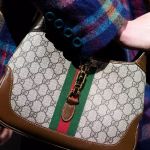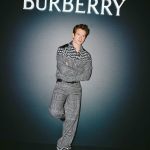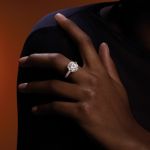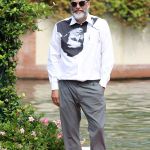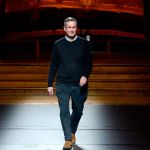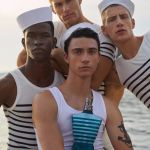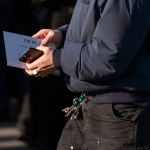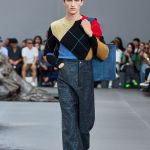
The history of Dries Van Noten
From the brand's foundation to the retirement announcement
May 3rd, 2024
That of Dries Van Noten is a rare case in the history of fashion. If other famous designers can be "explained" by categorizing them into a certain aesthetic reference, for Van Noten there are no boxes that hold. So much so that when summarizing his talents or orientations briefly, it is often said that he is a master of color – a true but reductive statement. The great and in some ways fluid abundance of prints, colors, and inspirations seen in his collections has both the opulence and the concreteness found among the masters of Flemish painting: everything is vivid, soft, absurdly detailed but also firm in its pragmatism. Van Noten's repertoire is enormous (38 years of work, over 100 collections), whose extraordinary aesthetic cohesion derives not so much from a specific method but from that attitude, which the designer attributes to his studies at the Academy of Antwerp, of drawing inspiration from everything without ever throwing himself deadweight onto a certain aesthetic. Just as George R.R. Martin distinguished writers, we too could divide designers into architects and gardeners: the former plan everything beforehand, the latter let inspirations develop freely, and Van Noten is among them. Helping us create this metaphor is the fact that Van Noten is truly a gardener, and the park surrounding his nineteenth-century villa thirty minutes' drive from Antwerp has become as famous over the years as he is.
But to understand Van Noten, one must take a step back. Born in Antwerp in 1958, Dries van Noten grew up in a family deeply rooted in the tailoring tradition: his father, a descendant of a family of tailors, owned several boutiques and traveled between Milan and Paris buying Ferragamo shoes and Charvet shirts. Van Noten's first unofficial job role was precisely that of a buyer for his father's store where, among other things, fashion shows were organized for local customers. The importance of this initial phase should not be underestimated: «I think by my father owning a store», the designer once said to Dazed, «I was definitely aware of the commercial aspect of selling clothes» An interest that moved in parallel with the designer's passion for «art, antiquities, and architecture» and that would later lead him to make frequent references to the world of art as well as to the 1970s culture that framed his adolescence.
@diandrasbeautyroom It’s #christmas all year when you treat yourself !!#driesvannoten #soiemalaquais #anvers #antwerp #selfcare #fragrancetiktok #fraghead #perfumetiktok #designerfragrance #alliwantforchristmas #fyp #noregrets #chestnut #silk original sound - Diandra’s Beautyroom
Van Noten's journey into the world of fashion began in 1977 when he enrolled at the Royal Academy of Fine Arts in Antwerp, where he crossed paths with future luminaries like Walter van Beirendonck and Ann Demeulemeester, becoming part of the Antwerp Six who first presented collectively in March 1986 with a show in London, a destination reached stormily in a van, but which entered the history of fashion as the dawn of a new avant-garde. Meanwhile, his brand had attracted the attention of prestigious buyers such as those from Barneys in New York and Whistles in London, who purchased some of Van Noten's men's shirts in smaller sizes and resold them as womenswear, which became a separate category in 1987. In 1988, the Antwerp Six, collectively named so since their names were extremely difficult for journalists to pronounce, moved from London Fashion Week to Paris. A year later, business was going well enough, and Van Noten opened, still in Antwerp, one of the "cathedrals" as well as his historic store: Het Modepaleis, whose opening marked a crucial moment for the emerging brand. By '91, he was already presenting his first menswear collection in Paris, while in '93, the fashion shows for the women's line began.
After its foundation, Van Noten's story was rather tranquil in a fashion world that, during the 1990s, was in the midst of acquisitions, mergers, and reshuffles of all kinds. It was the early years of LVMH, during which the "cashmere wolf" Arnault annexed brands left and right, and historic fashion houses were closed, reopened, and acquired with not always positive outcomes. It was around the mid-decade that Van Noten organized some of his most iconic shows: for SS94, he made rose petals rain down on the runway and audience; for FW94, a troop of waiters in white livery served food and drinks on silver trays, and the red carpet of the runway was rolled out just before the show; for SS95, models cycled through the Palais Royale park, for SS96 he organized a fireworks display, and in FW96 he introduced the pairing of skirt and pants. For Van Noten, the fashion show was an immersive experience, an extension of the collection but devoid of both the grand theatricality of Galliano or Lagerfeld and the decadent provocations of Alexander McQueen. Despite critical success, there were economic uncertainties: the 1990s were the era of minimalism, and Van Noten's works with their color, abundance of prints, and unusual juxtapositions did not immediately win over the public. «There was a time, around 1997 and 1998, that was scary for me as a designer and for us as a company», Van Noten once said to The Guardian. «Suddenly, the big luxury groups had all the power, and I was just this guy doing ethnic collections. I did wonder about selling the company, at that stage».
In the same interview with The Guardian, Van Noten said that the period of mixed fortunes ended with the historical and social trauma of 9/11, which inaugurated such a dark phase that «suddenly, people wanted something they could feel attached to. I wanted the clothes to feel like something that had been inherited from a grandparent. We had a huge response. People came round to our way of thinking». This was also the period when the designer lamented the rise of fast fashion: «People start to think those prices are normal, that you should be able to buy a man's shirt for £20», he said. «But you can't even buy the fabric for one of our shirts for £20, let alone make the shirt or live off the profits». In the middle of the new decade, in October 2004 to be exact, Van Noten presented his 50th collection, still remembered today as one of his masterpieces: the runway was a long table illuminated by crystal chandeliers, with places set for 500 guests served by 250 waiters. After the poisson en papillote was served, the models began to parade in a series of all-white looks that gradually became more and more colorful. Another annus mirabilis for the designer was 2008 when he won the award for best international designer at the CFDA and dressed Cate Blanchett for the Oscars, subsequently starting a long relationship with the actress.
The years immediately preceding 2010 also marked a marked expansion of the brand, which in 2007 opened its first boutique in Paris and ten months later one in Singapore – the Tokyo and Hong Kong stores had already been open for a few years. Let's fast forward to 2014: that was another annus mirabilis when, for the first time, Van Noten became the protagonist of a retrospective exhibition at the Musée des Arts Décoratifs in Paris called Dries Van Noten: Inspirations – probably one of the most beautifully curated fashion exhibitions ever staged. Two floors: the first dedicated to inspirations, with mixes of film clips, old French fashion magazines, artifacts retrieved from the museum's archives, artworks by Bronzino, Picasso, and Damien Hirst; the second dedicated to actual clothes and accessories. The winter collections of 2014 also framed the show: the men's, presented in January, with the motto of Rave and Renaissance abandoned prints and embroideries in favor of dyes, acid washes, fur collars. Even better was the women's collection, presented on the eve of the opening, in which Van Noten's eclecticism was expressed to the fullest: silvery floral motifs, coats and trousers with masculine cuts, languid 1930s silhouettes and touches of glam rock, rave aesthetics, and psychedelia, with T-shirts and sweatshirts full of optical prints.
During this period, the independence of the designer became central. In 2013, Van Noten told WWD: «Our business doesn’t have to grow every year a huge amount like when you are a part of a big group. I don’t need to have a store in every city. It’s a luxury that I can say I just want to continue the way that we are doing…to be creative and be busy with things I really love and not be forced to do all the bags and the shoes and the sunglasses and things like that». In fact, his turnover (growing healthily as it went from about 30 million annually in 2007 to just under 100 million estimated ten years later) came almost entirely from ready-to-wear – something not even the biggest brands can always boast. In the midst of the streetwear storm, Van Noten allowed himself only one men's collection, SS15, to explore his personal interpretation of sportswear through the lens of ballet, inspired by Rudolf Nureyev and, among other things, having all models wear ballet flats as recently, and much more tepidly, done by Dior. But the designer outdid himself the following year with a collection inspired by the Pre-Raphaelites and the Shakespearean character Ophelia, whose invitations were a transparent box filled with living moss, and for whose finale the 57 models reclined on a carpet of grass and lichen in a kaleidoscope of prints and sheer, sparkling fabrics. Other highlights were the FW16 men's collection presented at the Palais Garnier and the women's collection inspired by decadence and Marchesa Luisa Casati, featuring a soundtrack blending Stravinsky's music, the reading of a D'Annunzio poem, and the beating of a human heart.
More highlights and shows followed, but the brand's story continued largely undisturbed until 2018 when a majority stake was acquired by the Puig Group which wanted to increase the brand's turnover. Very interesting were the words shared at the time with WWD: «I have been searching for a strong partner for the company which I have built for more than 30 years. I am especially happy that Antwerp and my team will remain at the company’s heart and center. Our relationship with our customers is a cherished one and will only benefit from this enhanced vision». Words that suggest that the acquisition probably took place under the stringent condition that creative independence, team composition, and the brand's geographical base would be maintained. Van Noten's integrity and authenticity were again the subject of discussion in the pandemic year when it was precisely an open letter from the designer that opened up the (still ongoing) issue of the huge dysfunctionality of the fashion calendar between excessive collections, unbalanced discounting, and excessive production rhythms. On that occasion, Van Noten's letter sparked discussion without closing it: it is undeniable that that moment represented a wake-up call, more than for fashion itself, for the general public, establishing a watershed that defined the actions of "old" commercial and hyperactive luxury and those of a "new" luxury, with designers producing in ways alternative to the classic canon of the system.
@aannnttoo0 Just me opens dries van noten ss23 #parisfashionweek #fy original sound - niah <3
Finally, after a series of stellar collections (our favorite was the SS23 men's collection) and after the launch of a highly praised fragrance line, Van Noten announced his imminent departure from the scene. Even on this occasion, while distressing many, Van Noten was praised for his sense of measure and responsibility: deciding to step away from the scene on a high note, after securing the future of his brand, represented for many a rare example in a fashion scenario where not only generational turnover is often difficult but also where more and more designers from the past, having run out of things to say, cause stagnation in their brand. Not that this was the case for Van Noten. His final words on the brand are a perfect closure, likening his creative work to his beloved garden: «The brand is now flourishing. Like in a garden, you decide what to plant and at some point, it keeps blooming».









